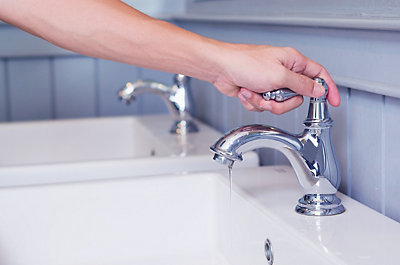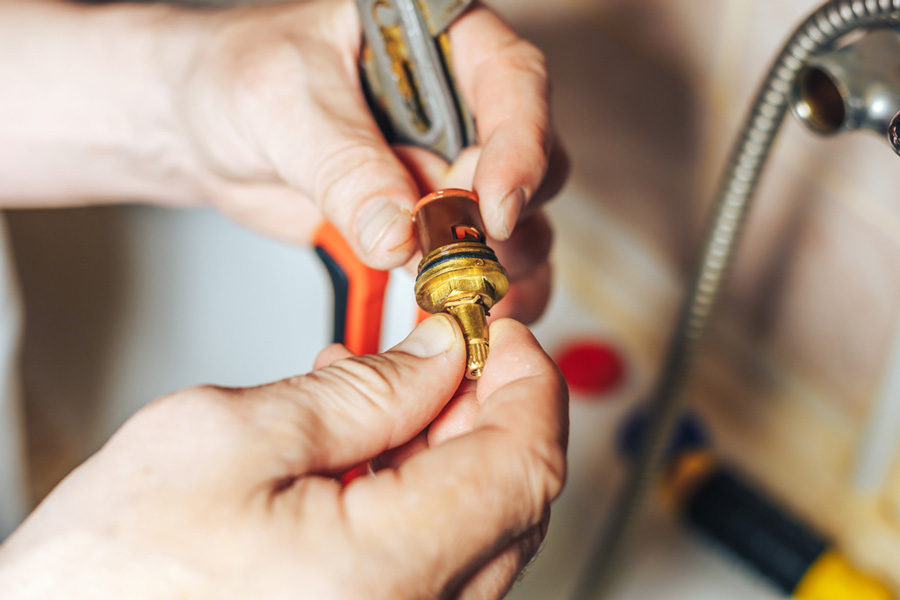How It's Important to Mend a Dripping Faucet
How It's Important to Mend a Dripping Faucet
Blog Article
The author is making a few great annotation related to Why Is It Important To Fix Your Leaking Tap/Faucet? as a whole in this article on the next paragraphs.

Leaking taps might feel like a small inconvenience, yet their impact surpasses just the aggravation of the sound. From drainage to incurring unneeded economic prices and health and wellness dangers, ignoring a trickling faucet can lead to various consequences. In this article, we'll delve into why it's critical to resolve this typical household issue without delay and effectively.
Waste of Water
Environmental Impact
Trickling taps contribute significantly to water waste. According to the Environmental Protection Agency (EPA), a solitary tap trickling at one drip per second can lose more than 3,000 gallons of water each year. This not just strains water resources however additionally affects ecological communities and wild animals depending on them.
Financial Costs
Enhanced Water Bills
Beyond the ecological influence, trickling taps can blow up water costs considerably. The accumulated wastage in time equates into higher energy expenditures, which can have been prevented with prompt fixings.
Prospective Property Damages
Additionally, prolonged leaking can lead to harm to fixtures and surfaces bordering the faucet. Water accumulation can create staining, corrosion, and also structural problems if left ignored, leading to additional fixing expenses.
Health Concerns
Mold And Mildew and Mildew Development
The constant presence of moisture from a dripping faucet creates a suitable atmosphere for mold and mildew growth. These fungis not just jeopardize indoor air quality but additionally present wellness dangers, particularly for individuals with respiratory system conditions or allergic reactions.
Waterborne Illness
Stationary water in leaking taps can come to be a breeding ground for bacteria and various other microorganisms, enhancing the risk of waterborne diseases. Contaminants such as Legionella germs prosper in stagnant water, possibly resulting in serious health problems when consumed or breathed in.
DIY vs. Professional Repair service
Advantages and disadvantages of DIY Repair Work
While some may try to deal with a leaking faucet themselves, DIY repair services feature their own collection of obstacles. Without proper expertise and tools, DIY attempts can worsen the problem or bring about insufficient repairs, lengthening the trouble.
Advantages of Working With a Specialist Plumber
Hiring a professional plumber ensures that the underlying cause of the leaking faucet is addressed effectively. Plumbings possess the proficiency and equipment to detect and fix faucet issues successfully, saving time and lessening the danger of further damages.
Step-by-Step Guide to Fixing a Dripping Tap
Tools Required
Prior to trying to take care of a dripping tap, gather the needed devices, including an adjustable wrench, screwdrivers, substitute parts (such as washing machines or cartridges), and plumber's tape.
Common Faucet Issues and Their Solutions
Recognize the kind of tap and the details issue triggering the drip. Usual problems include damaged washers, corroded shutoff seats, or defective O-rings. Describe supplier instructions or on the internet tutorials for detailed guidance on repair work.
Preventive Measures
Regular Upkeep Tips
To stop trickling taps, do regular upkeep such as cleansing aerators, evaluating for leaks, and changing damaged parts immediately. Furthermore, take into consideration setting up water-saving gadgets or upgrading to much more effective fixtures.
Value of Prompt Services
Addressing trickling taps as soon as they're discovered prevents more water wastage and possible damages, eventually saving both water and cash over time.
Impact on Residential Or Commercial Property Value
Assumption of Well-Maintained Residential Or Commercial Property
Keeping a property in good condition, consisting of dealing with upkeep issues like trickling faucets, improves its regarded value and value amongst potential buyers or occupants.
Impact on Resale Worth
Properties with well-kept plumbing components, consisting of taps, command greater resale values in the real estate market. Dealing with leaking taps can add to a favorable impression during residential or commercial property evaluations and settlements.
Environmental Obligation
Individual Contribution to Preservation
Taking duty for dealing with trickling taps aligns with wider initiatives towards water preservation and environmental sustainability. Every individual's actions collectively make a considerable influence on maintaining precious sources.
Lasting Living Practices
By prioritizing prompt repair work and taking on water-saving practices, individuals contribute to lasting living methods that benefit both existing and future generations.
Final thought
Addressing a trickling tap goes beyond simple ease; it's an important action toward conserving water, reducing monetary expenses, and protecting wellness and residential property. Whether through DIY fixings or expert assistance, taking action to fix leaking taps is a small yet impactful means to advertise responsible stewardship of sources and add to a much healthier, more lasting future.
How to Fix a Dripping or Leaky Faucet
A leaking faucet is one of the most common problems that homeowners encounter, but it being commonplace doesn’t make it any less annoying. The constant drip drip drip of a leaking bathtub faucet, showerhead, or sink tap can disturb your home’s serenity. Left neglected, a dripping faucet can also result in higher water bills and discoloration or mold growth in your sink or plumbing fixtures.
Fortunately, you don’t have to be a trained plumber to know how to stop a dripping faucet. With some basic tools, replacement parts, and a little patience, leaky faucet repair is a breeze. In this article, we’ll explain what causes dripping faucets and how you can fix them.
What Causes a Leaking Faucet?
Kitchen and bathroom faucets come in all manner of designs, but most involve some combination of valves, O-rings, seals, and washers. The O-ring is usually the weakest link, but any one of these pieces can wear down over time. Heat, moisture, temperature fluctuations, minerals, mold, and movement can contribute to warping and corrosion, breaking the watertight seal. This just comes with the territory of being a homeowner. Everything is always subject to wear and tear, and some component parts of your appliances and fixtures need to be replaced on occasion. At least replacement O-rings are cheap!
More rarely, dripping faucets can be a symptom of excessively high water pressure. Were this the case in your home, you would probably notice that the leak is not isolated to one faucet. Water pressure issues are harder to resolve on your own. We recommend contacting a professional plumber if you suspect your water pressure is too high.
How to Fix a Dripping Faucet
Pipe wrench or monkey wrench Allen wrench set Screwdrivers Old towel or rag Shut off the water.
Before you do anything, you need to turn off the water to keep from drenching your kitchen or bathroom. You should find a valve under the sink and against the wall. Once you’ve turned this valve, try turning the faucet on to confirm that the water source has been cut off.
If you can’t locate your local valve for the faucet you’re working on, you can always shut off the water to the house at the main valve. Of course, this will prohibit anyone from using the sinks, showers, or toilets while you’re working on the faucet that’s giving you trouble.
Plug or block the drain.
You’ll be disassembling the faucet and removing some small bits of hardware. Plug the drain with a stopper or rag to avoid the possibility of a small screw falling into your P-trap.
Take apart the faucet assembly.
There are several varieties of kitchen and bathroom faucets, each with its own manner of assembly. For detailed instructions on how to disassemble your faucet, you can refer to the fixture’s manual or contact the manufacturer. If you know whether you have a ball, disc, cartridge, or compression faucet, you can find detailed schematics online.
In general, you need to begin by removing the faucet handles. You might notice a small screw that you’ll need to remove with a screwdriver or Allen wrench. If you don’t see any visible securing hardware, it’s likely hidden under a decorative cap that can be unscrewed or popped off with flathead screwdriver.
Remove each piece methodically, consulting a schematic when necessary. Take notes or arrange the pieces in such a way to make it easier to correctly reassemble the faucet later.
Remove the cartridge.
Once you’ve removed the handles and securing hardware, you should be able to remove the valve cartridge or stem. Some cartridges will slide right out. Other faucet models will require you to loosen a nut with a pipe wrench before you can remove the valve stem.
Examine the exposed hardware.
With the cartridge or stem removed, inspect the component parts. Check the rubber O-rings for wear and tear. Also examine the seat washer for corrosion or other damage. These pieces are usually the responsible parties for a dripping faucet, but it’s worth inspecting the other component parts while you have the faucet disassembled.
Find replacement parts.
Once you’ve identified which faucet component has failed, find an identical replacement. Your local hardware store should have O-rings, seat washers, and other standard components in stock. If you have a luxury or uncommon faucet, you may have to contact the manufacturer for a replacement part.
It’s a good idea to take your old parts with you to the hardware store so you can compare them with the store’s inventory and be sure you’re purchasing the correct replacement.
Reassemble the faucet.
With your new parts in hand, reconstruct the faucet and handles. Don’t be tempted to overtighten screws or nuts. You might think this could create a better seal, but it can instead damage or bend a delicate part of the assembly and create a new problem for you.
Turn on the water and test the faucet.
The only thing left to do is test your work. Unplug the sink, turn the water back on, and try the faucet. Congratulate yourself on a job well done!
https://www.libertyhomeguard.com/how-to-fix-a-dripping-or-leaky-faucet/

Do you appreciate reading about Why Are My Faucets Dripping (And Can I Fix It Myself)?? Put feedback down the page. We'd be glad to know your opinion about this write up. We hope to see you back again later on. For those who appreciated our article please consider to pass it around. Thanks a lot for your time invested reading it.
Report this page